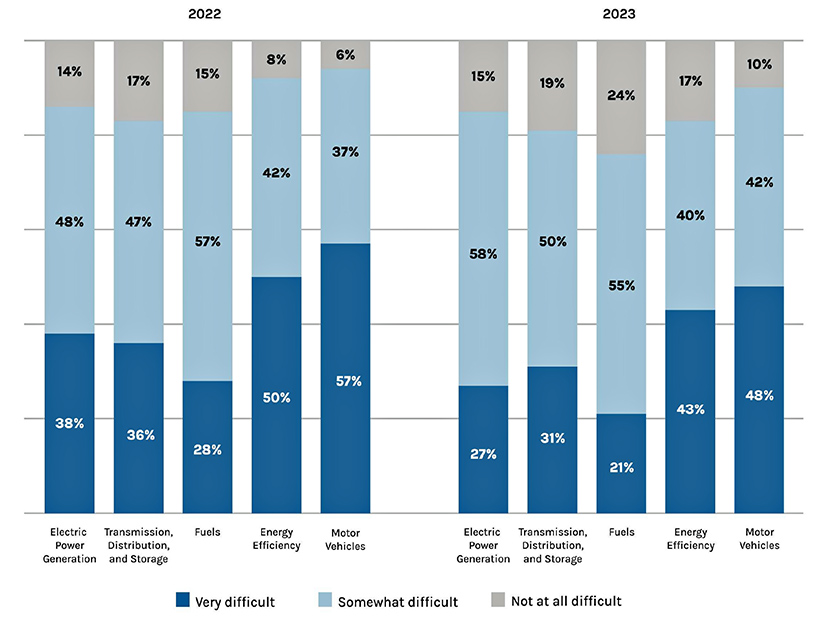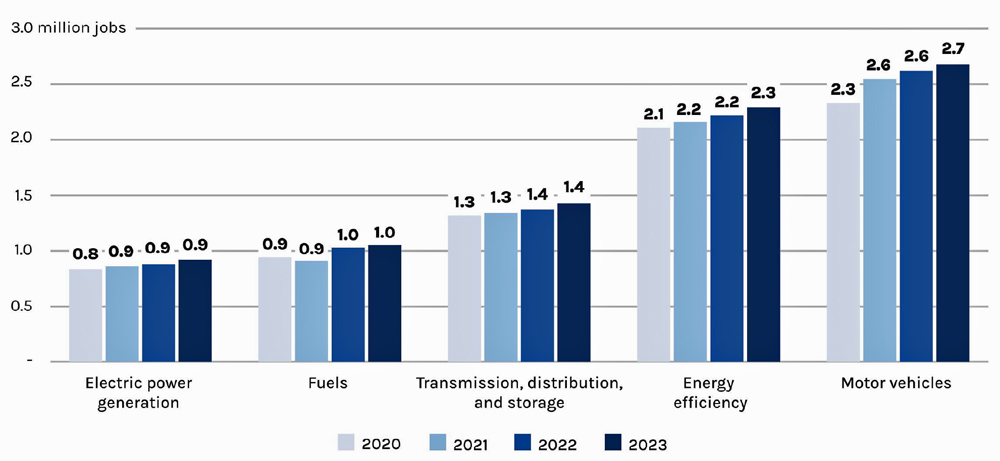
The Department of Energy on Aug. 28 reported the U.S.’ clean energy workforce grew 4.2% in 2023, twice the rate of the rest of the energy sector and economy overall.
Total energy jobs reached 8.35 million, and clean energy jobs accounted for 42% of that, DOE said in its “United States Energy & Employment Report 2024,” the latest in a series of annual assessments of the country’s energy workforce.
The document also serves as a report card of sorts for the Biden administration’s climate agenda and a measure of return on investment for the hundreds of billions of tax dollars being committed to boosting the economy by helping the planet.
“Our policies are working,” Energy Secretary Jennifer Granholm declared in the news release announcing the report. “We are now starting to see the job impacts of investments made through the infrastructure and Inflation Reduction laws — first in construction, and as America builds more of these factories, we’ll see hundreds of thousands more.”
Altogether, the report indicates, clean energy employment grew by 142,000 jobs in 2023, or nearly 5% of all new jobs in the U.S. economy.
And its growth rate is outpacing the “traditional” energy sector: Since 2020, employment in clean energy has increased by 400,000 jobs, or 12.8%, compared with 427,000, or 9.7%, in the rest of the energy sector.
The 2024 edition is based on survey responses from a record-high 42,100 businesses nationwide and on data from the U.S. Bureau of Labor Statistics. It is the first report to tally construction jobs associated with buildout of U.S. clean energy manufacturing, which accounted for an additional 28,000 jobs in 2023.
Details
The 2024 report fills 221 pages with granular details on the components of the energy industry; a companion report drills down on state-level data for 361 pages.
It defines clean energy as renewables and other non-fossil technologies that enable a transition to net-zero emissions. This includes carbon capture, storage and utilization, but not technology that allows for more efficient use of fossil fuels, such as high-efficiency furnaces.
Details specific to clean energy include:
-
- Clean vehicle employment grew 11.4%, not counting battery manufacturing and electric vehicle charging.
- Solar industry employment grew 5.3%, and wind 4.6%.
- Union representation in clean energy grew to 12.4%, exceeding both the sector as a whole (11%) and the U.S. private sector (7%).
- Employers reported adding relatively few jobs related to EV charging in 2023 — just 559 — but as it is a small, emerging sector, this constituted 25% growth.
- Energy efficiency added the most jobs of any category — 74,700 — but as it is a large, established industry, this translated to only 3.4% growth.
Details specific to the energy sector as a whole include:
-
- Electric power generation jobs showed the fastest growth of any energy technology in 2023, adding 36,458 jobs while shedding just 870.
- Industries involved in transportation of coal, petroleum and other fuels shed 11.6% of their workforce.
- Unionized and non-unionized employers alike reported less difficulty finding workers to hire in 2023 than in 2022, although 40% of non-union firms still reported it “very difficult,” compared with only 24% of unionized firms.
- Some demographics are under-represented in the sector: Black workers are 13% of the U.S. workforce but hold 9% of sector jobs; women are 47% of the U.S. workforce but hold 26% of jobs.
- Other demographics are over-represented: Workers under 30 comprise 29% of the workforce but 22% of the national workforce; Hispanic or Latino workers landed 31% of new jobs in 2023 but are 19% of the national workforce; veterans make up 9% of the workforce but only 5% of the national workforce.



